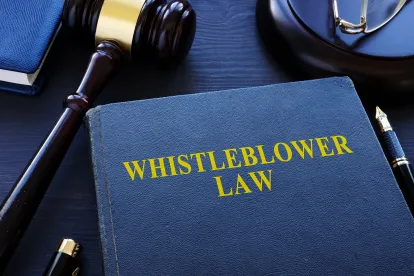SOX prohibits publicly traded companies from discriminating against employees who report what they believe to be instances of fraud or securities law violations. In Trevor Murray v. UBS Securities LLC et al., Murray filed a whistleblower action alleging that UBS terminated his employment in violation of SOX.
Murray was a research strategist at UBS, and the US Securities and Exchange Commission (SEC) required him to certify that his reports regarding UBS’s business were independently produced and reflected his own views. Murray informed his supervisor that two leaders of the UBS trading desk were engaging in what Murray believed to be unethical attempts to skew his independent judgment, and he was fired shortly thereafter. At trial, UBS moved for judgment as a matter of law, arguing that Murray had failed to produce any evidence that his supervisor possessed any retaliatory animus toward him. The District Court denied the motion and instructed the jury that to prove his SOX claim Murray was required to prove his “protected activity was a contributing factor in the termination of his employment.” If Murray could prove that by a preponderance of the evidence, the court further instructed the jury that UBS would be required to demonstrate by clear and convincing evidence that it would have terminated Murray even if he had not engaged in protected activity.
The jury found that Murray established his claim and that UBS failed to prove by clear and convincing evidence that it would have fired Murray even if he had not engaged in protected activity. Following trial, UBS renewed its motion for judgment as a matter of law, and the district court again denied UBS’s request. UBS appealed, and the Second Circuit vacated the jury’s verdict, holding that “[r]etaliatory intent is an element of a section 1514A claim,” and that the trial court failed to properly instruct the jury.
Writing for the High Court, Justice Sonia Sotomayor rejected the Second Circuit’s holding, noting that “[s]howing that an employer acted with retaliatory animus is one way of proving that the protected activity was a contributing factor in the adverse employment action, but it is not the only way.” The Court further explained that Congress’s intent was that in SOX actions, the plaintiff’s initial burden is simply to demonstrate that the protected activity is a “contributing factor in the unfavorable personnel action.” Once a plaintiff makes such a showing, the burden shifts to the employer to “demonstrat[e], by clear and convincing evidence,” that it “would have taken the same unfavorable personnel action in the absence of” the protected activity. The Court’s opinion further noted that this burden-shifting framework was not unique to SOX, and that requiring a plaintiff to prove retaliatory intent would conflict with this longstanding framework.
In the wake of this decision, employers may want to reexamine their whistleblower policies to ensure employee complaints are handled in a way that is consistent with the Court’s ruling.




 />i
/>i

